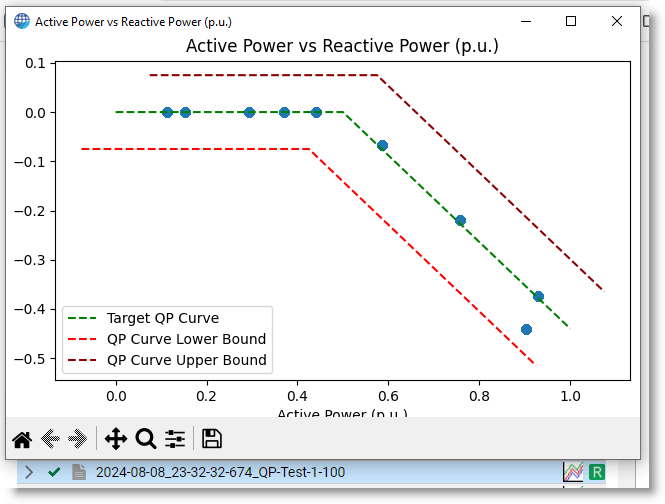Automation - Example Projects Details¶
The Project menu allows a user to create a new project or open an existing one.

New Example¶
Clicking Project → New Example will open example project. Items marked with a red asterisk are required.
Please fill in the information:
- Project Path – Path to the where the new project folder will reside
- Zipped results Path – Path to the example results zip file
- Project Directory Name – Name to use for the project folder
- Project Label - Text at the top of the project to track multiple projects.
- Test Types:
- IEEE 1547.1 Clause 5 and 6 – Type testing compliant with the standard using communications to DAS, DC/AC simulators, and EUTs.
- UL 1741 SB Tests – directly references UL 1741 SB.
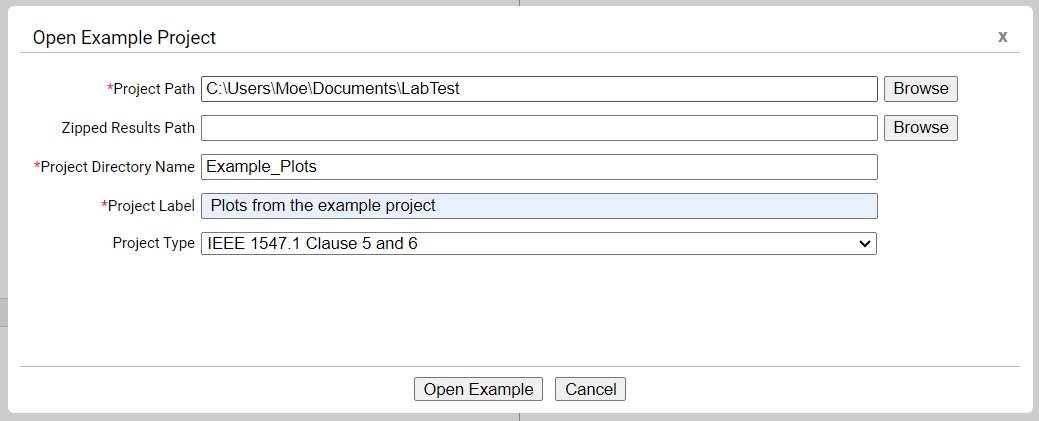
Note: current implementation does not support cloud drives such as Microsoft OneDrive or Google Drive.
Once example project has been open. Automation → Project → New Example will show the results: then choose one and click on the coresponding graph icon
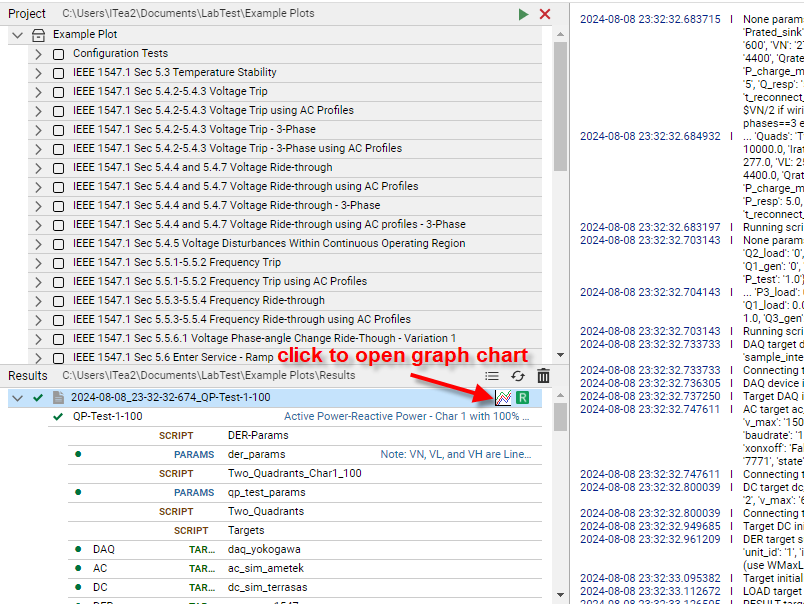
Example 1: Voltage-Time Plot¶
 Voltage vs Time
Voltage vs Time
Select “Voltage-Time Plot” and click “Generate Plot” to view the corresponding graph.
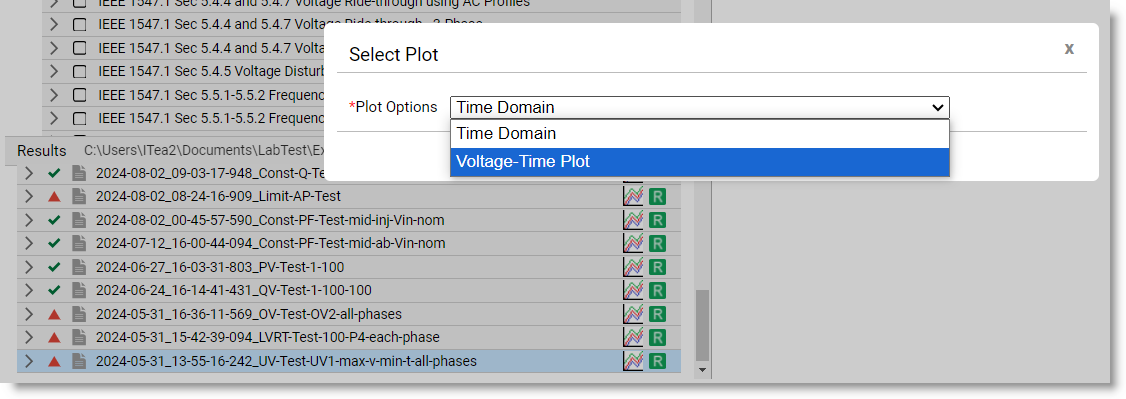 Voltage vs Time
Voltage vs Time
 Click on slider to adjust subplot param
Click on slider to adjust subplot param

Example 2: Time Domain Plot¶

Select “Time Domain” and click “Generate Plot” to view the corresponding graph.

Example 3: Volt-Var Scatter Plot¶
Select “Volt-Var Scatter” and click “Generate Plot” to view the corresponding graph.

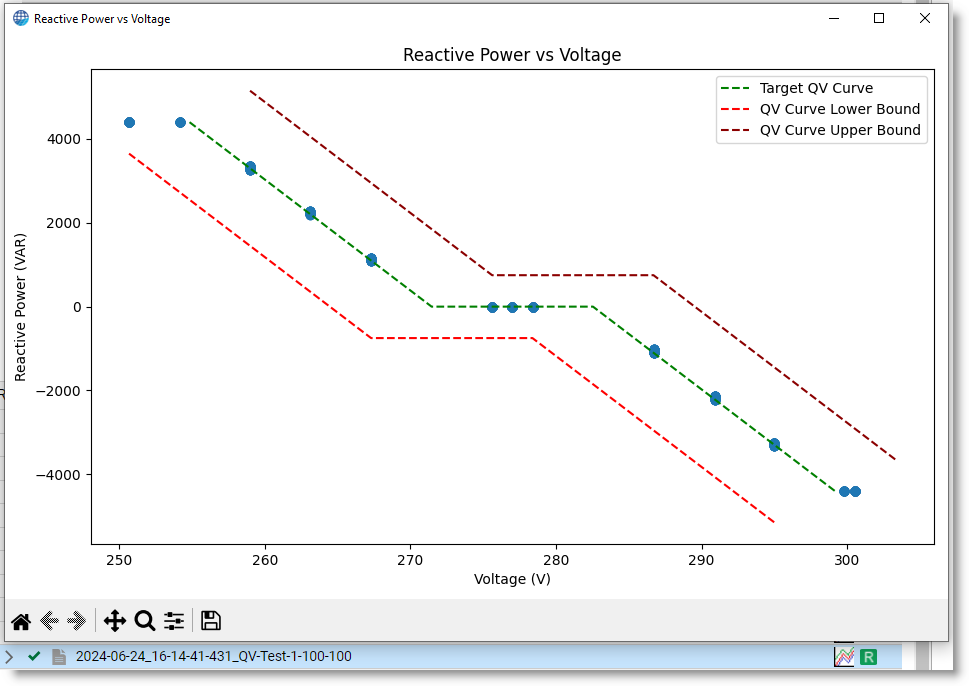 Reactive power vs Voltage
Reactive power vs Voltage
Example 4: Time Domain Plot¶
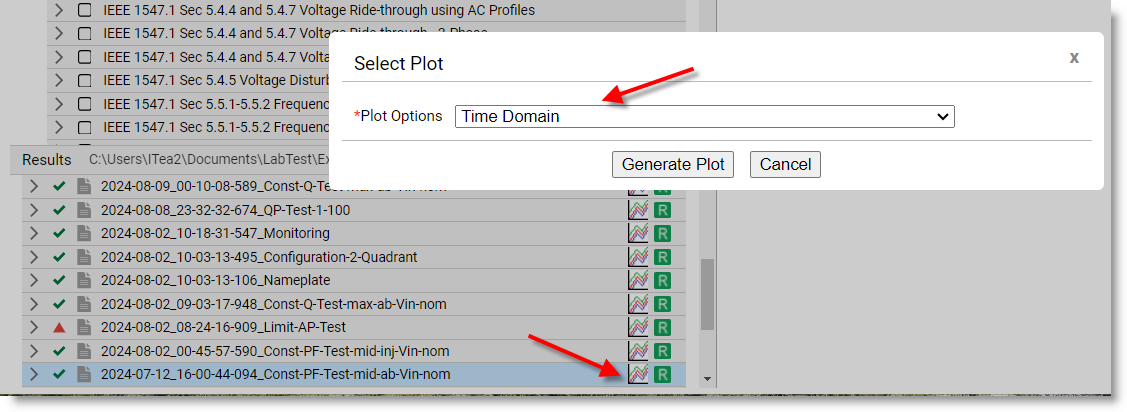
Select “Time Domain” and click “Generate Plot” to view the corresponding graph.
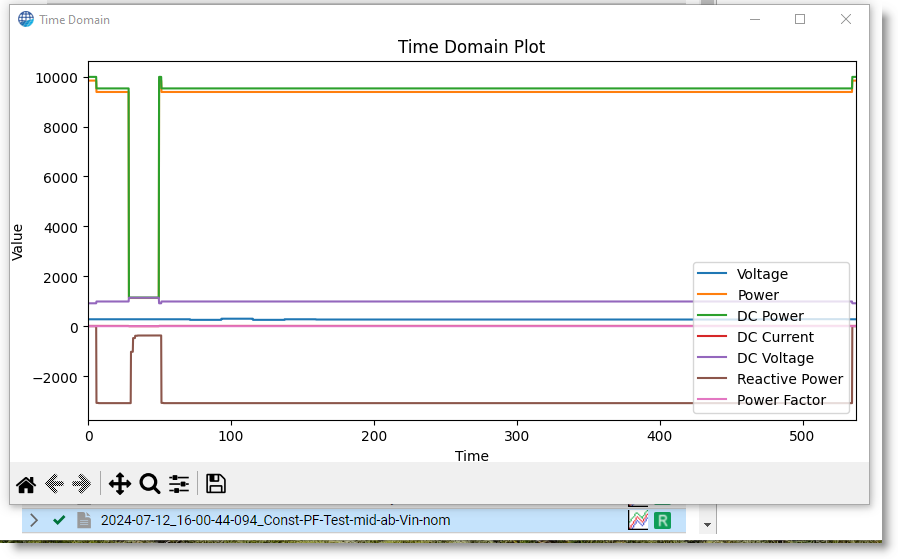
Example 5: Constant PF Scatter Plot¶
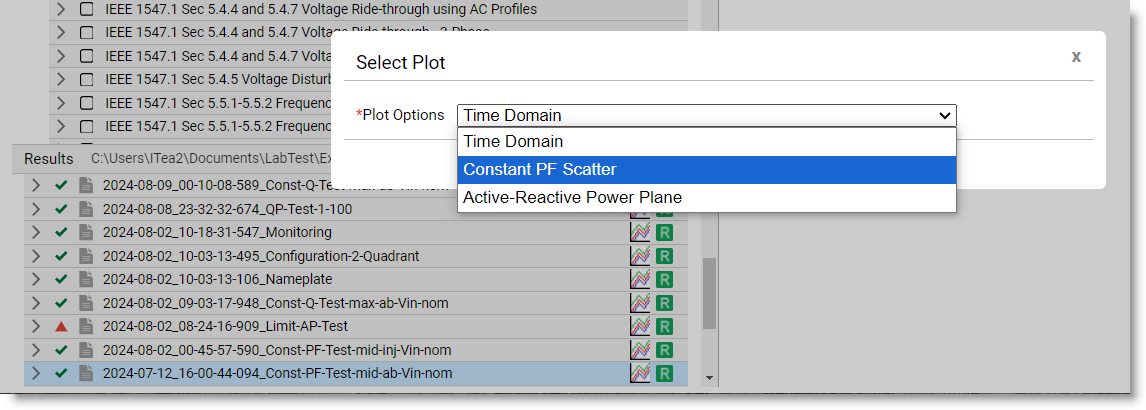
Select “Constant PF Scatter” and click “Generate Plot” to view the corresponding graph.
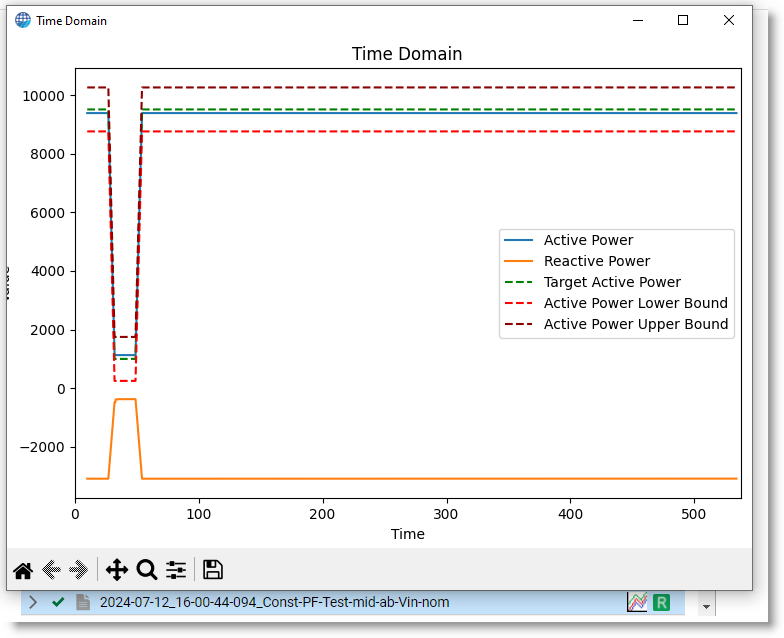
Example 6: Active-Reative Power Plane¶
Select “Active-Reactive Power Plane” and click “Generate Plot” to view the corresponding graph.

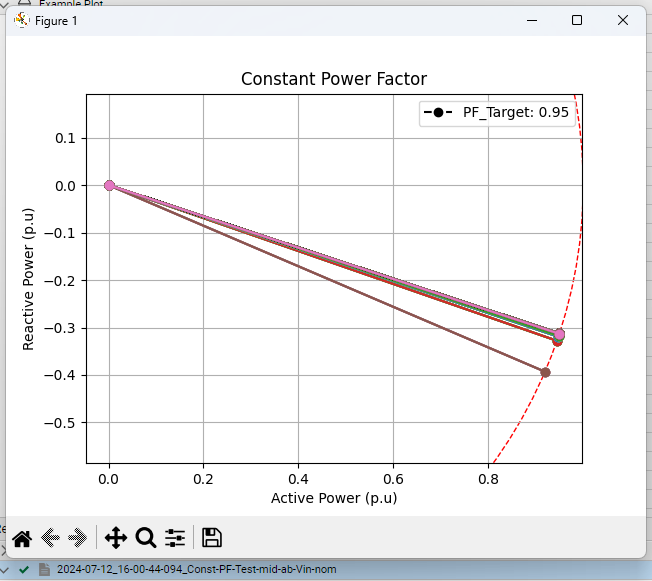 Constant Power factor
Constant Power factor
Example 6: Active-Reative Power Plot¶
Select “Active-Reactive Power Plot” and click “Generate Plot” to view the corresponding graph.

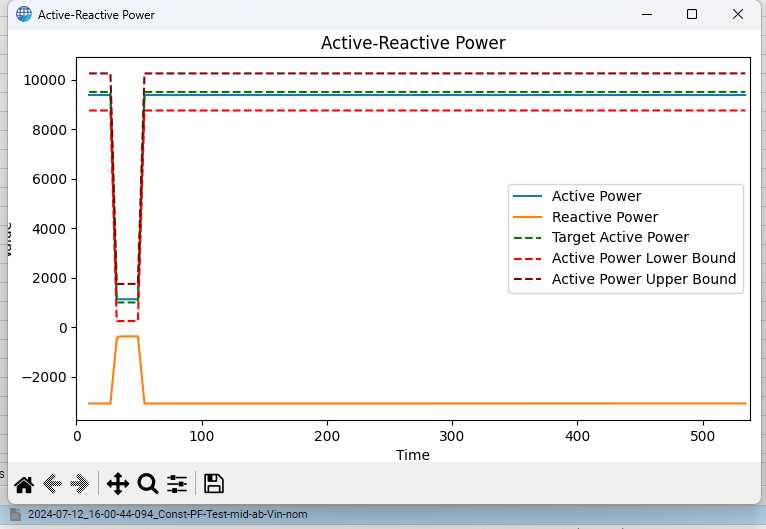
 Constant Power factor
Constant Power factor
Example 7: Time Domain Plot¶

Select “Time Domain” and click “Generate Plot” to view the corresponding graph.
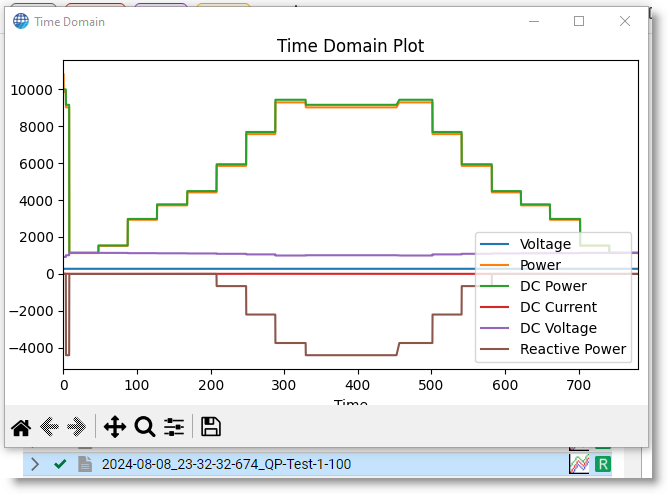
Example 8: Watt-Var Scatter¶
Select “Watt-Var Scatter” and click “Generate Plot” to view the corresponding graph.

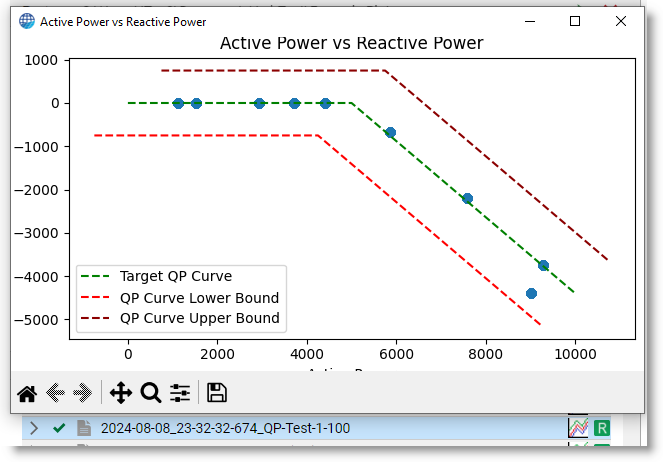
Example 9: Watt-Var Scatter (p.u.)¶
Select “Watt-Var Scatter (p.u.)” and click “Generate Plot” to view the corresponding graph.

